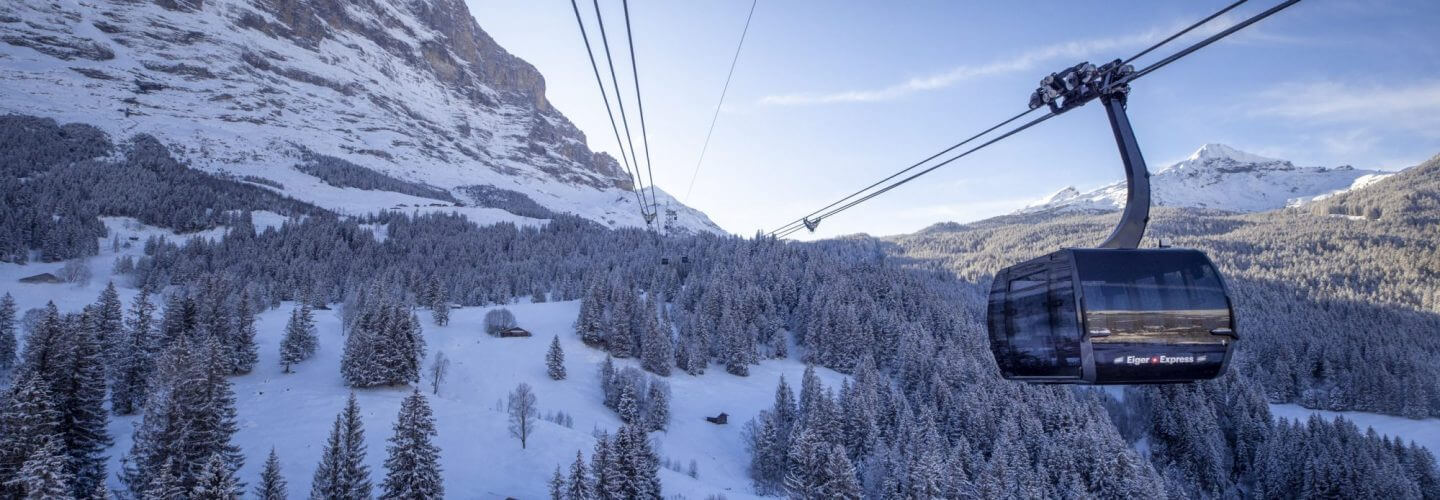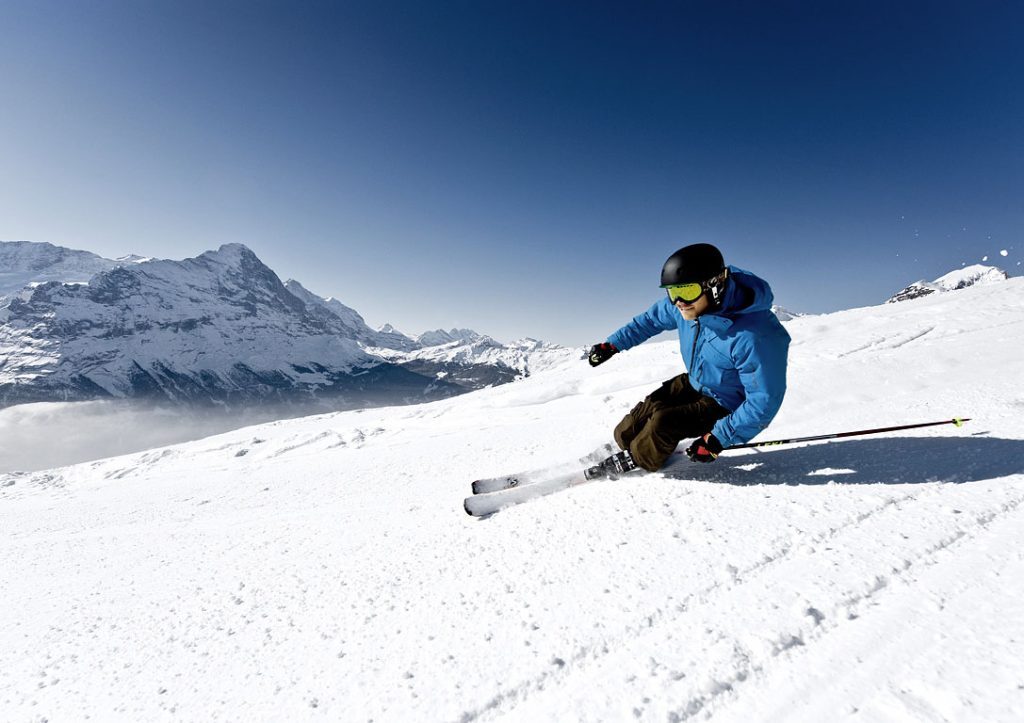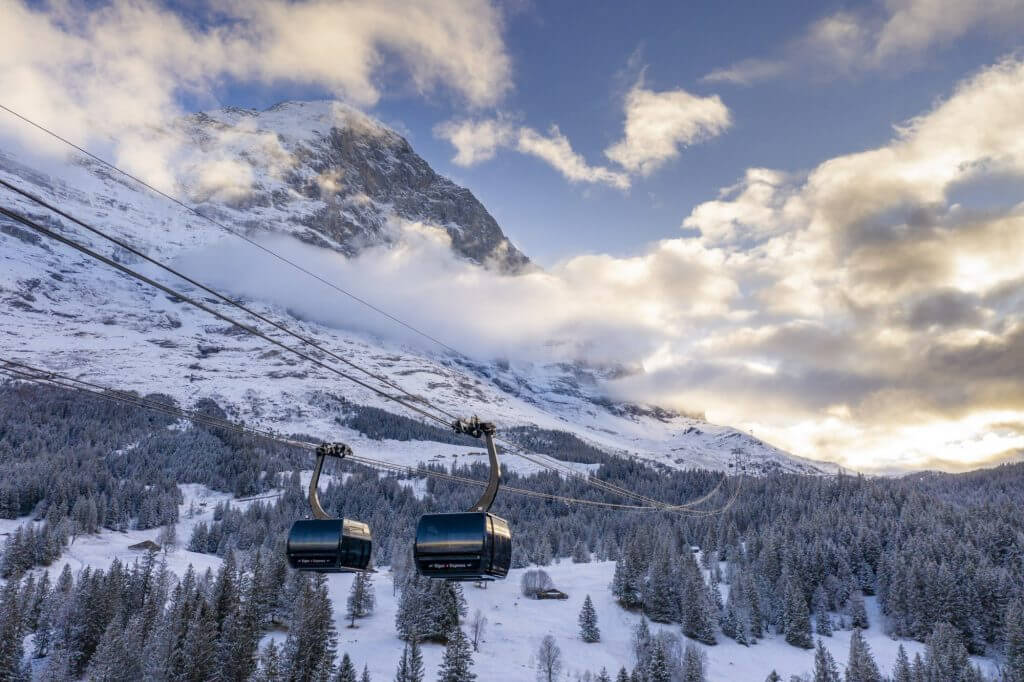The new V-Cableway Eiger Express lift in Switzerland’s spectacular Jungfrau Ski Region isn’t just transforming the speed skiers can access Wengen and Grindelwald’s slopes, it’s doing so in the most environmentally sensitive way possible.
In fact the trains and ski lift network in the Jungfrau region has been powered by its very own hydroelectric power station for well over a century – since long before climate change was known to be an issue. Since 1912, the first trains to transport visitors to the Jungfraujoch Top of Europe, the highest railway station in Europe at 3,454 metres, have been driven by local power, generated by the Lütschental hydro power station, built in the early 1900’s.
There are more recent innovations too though, these days the mountain railway uses its own braking power to generate new electricity for example.
In Grindelwald a wood-fired heating plant generates CO2-neutral thermal energy by burning forest chips, sawmill residue and waste wood from the region. This green power is also used on the new V-Cableway Eiger Express which transports skiers from Grindelwald to the heart of the Wengen-Grindelwald ski area on the Eigergletscher in 15 minutes.
“For a long time we have considered using the power from our natural resources to become more efficient in the Jungfrau Ski Region and now it’s more important than ever to harness the opportunities we have to become even more sustainable,” said Remo Käser from the Jungfrau Ski Region, who continued, “We are lucky to be blessed with so many natural resources, surrounded by some of the world’s most famous mountains such as the Eiger, Mönch and Jungfrau. But we are always thinking about how we can reduce our carbon footprint further and create our own energy that is recycled and reused – this is a major factor in the construction of the new Eiger Express lift that has transformed the access to the ski area and the Jungfraujoch Top of Europe experience.”



